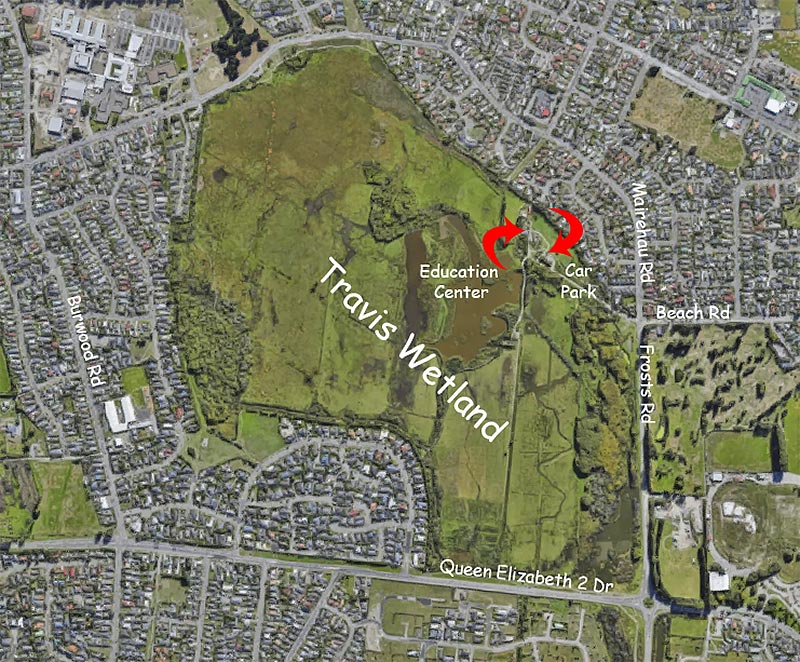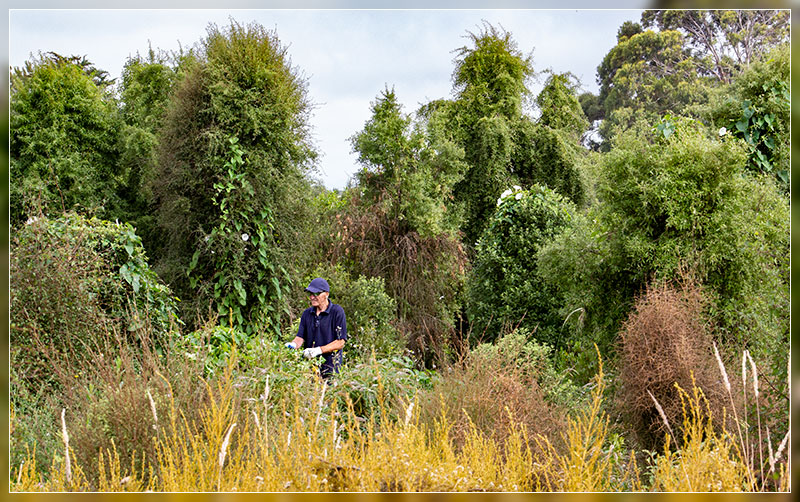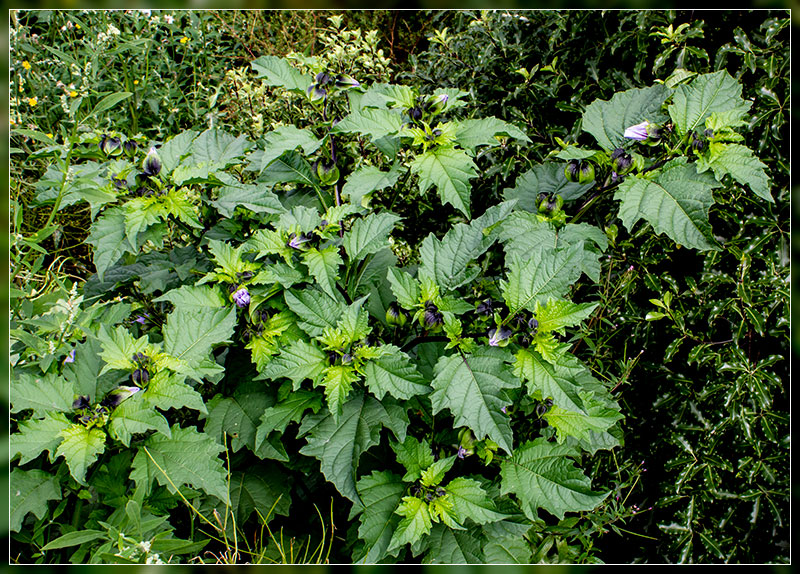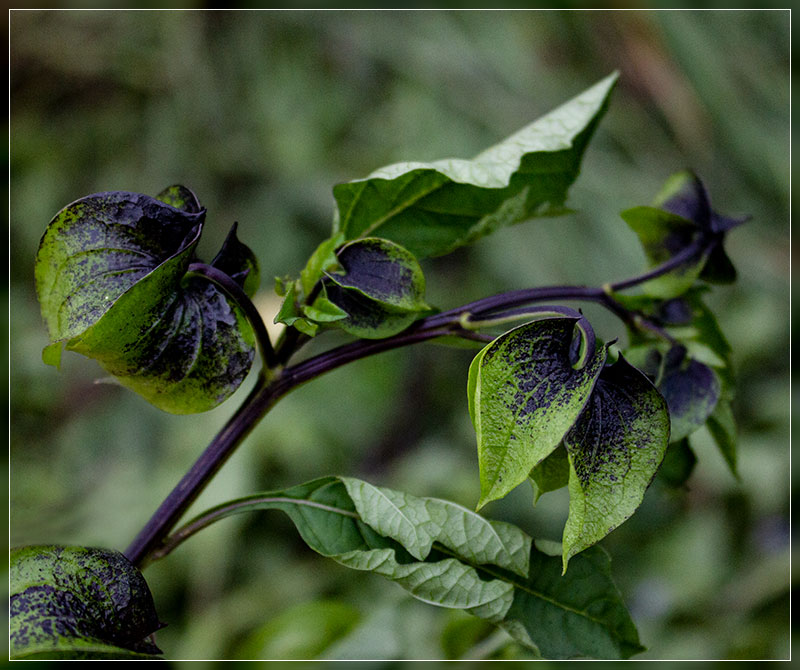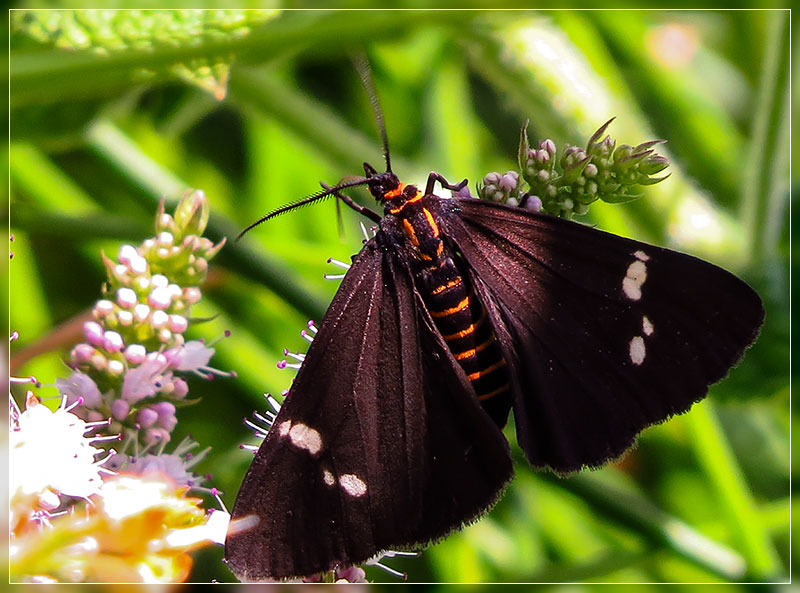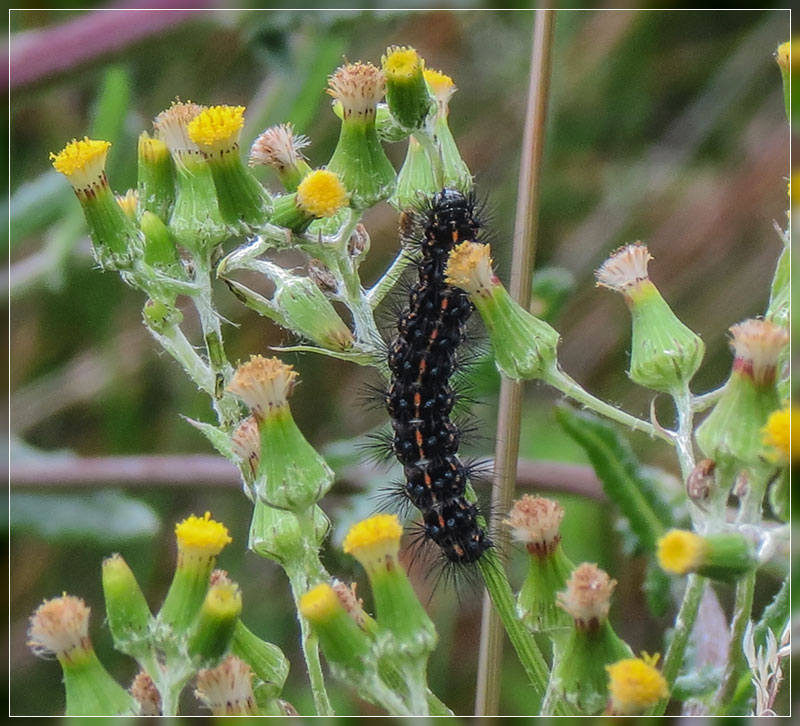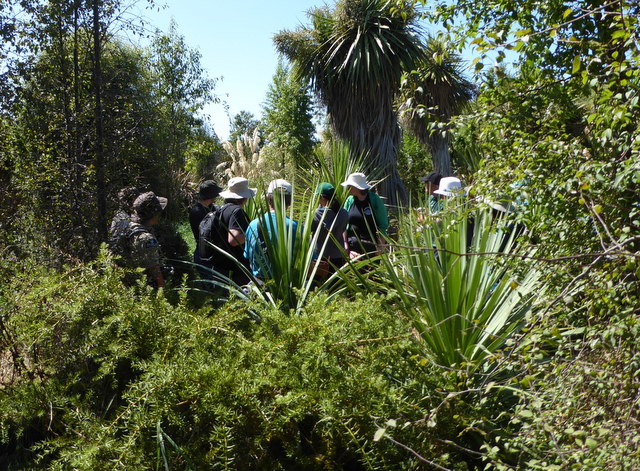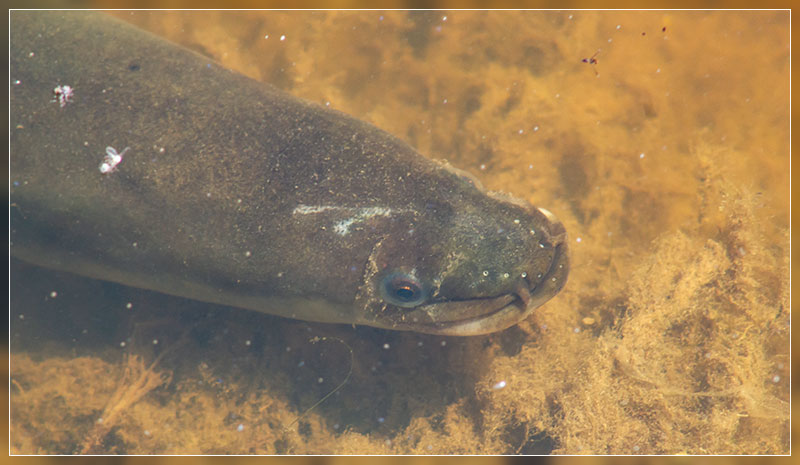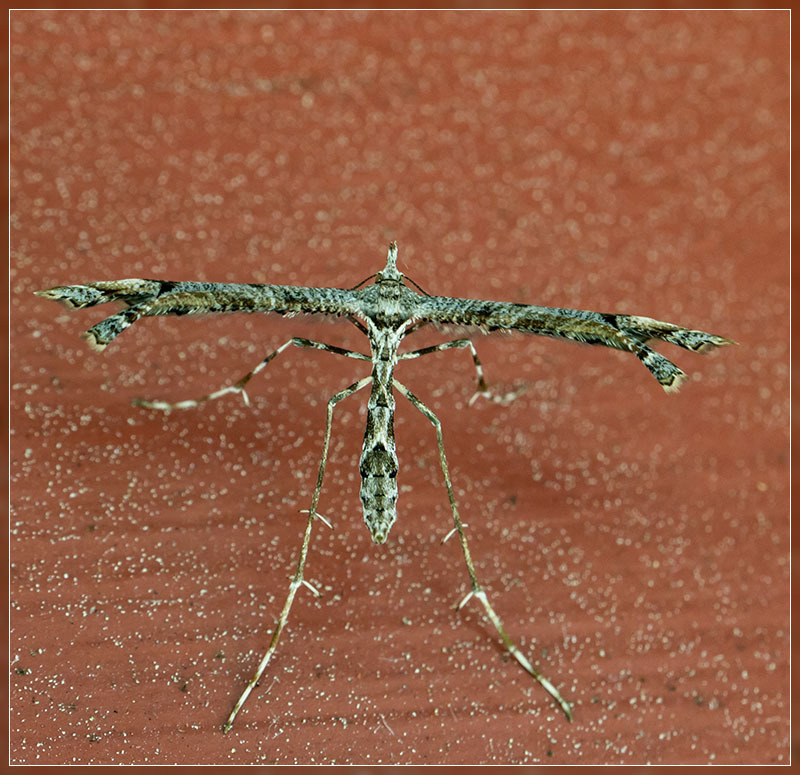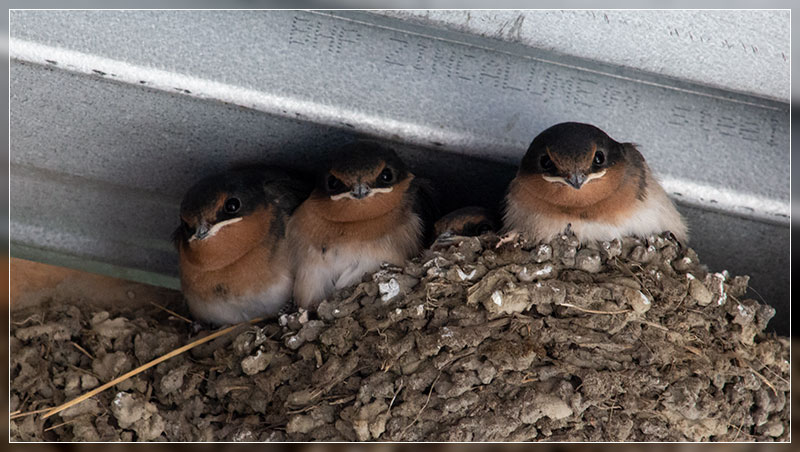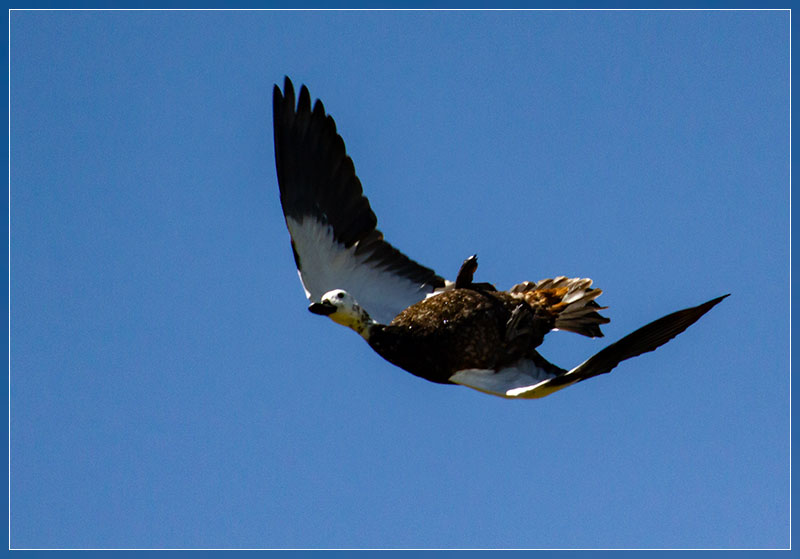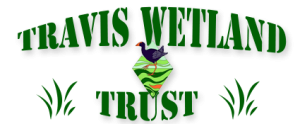 |
February 2019
Workday reminder, February 16 2019
Travis workday, Saturday February 16 2019, 9 am – 12:30.
Meet at the Education Centre (the old farm house) near the Beach Rd car park at 9 am.
We will be release weeding amongst the Beach Rd plantings or in the shadiest place we can find, if it’s hot.
Please wear appropriate clothing and footwear.
All tools provided. Afterwards we will go back to the Education Centre at the wetland for morning tea and a chat.
Latest News
Workday Saturday 19 January
This fine day saw 18 volunteers turn up to help with weeding around plants to the north of the Beach Road driveway . We were very pleased to welcome a family of four to our ranks and enjoyed their enthusiasm for the environment. Luckily the warm morning was tempered by some cloud and a north-easterly breeze, though frequent drink breaks were needed by late morning.
Due to all the rain earlier in the season, weed growth was prolific and planted natives were often completely hidden. Along with very high grass we cut back mallow, willow weed, dock and other undesirable species. The presence of burdock was annoying and we hope that it won’t spread to areas grazed by sheep, where its clinging burrs would attach to wool and disperse seeds over a wide area. One tall and attractive weed had us puzzled, though some could remember it as an old time garden favourite. This was later identified as Apple of Peru. At this time of year no weed-busting day is complete without convolvulus, and it was satisfying to remove this from shrubs and trees to reveal the desired forms of native specimens beneath.
Native plants have also benefited from the wet season, especially in damper areas away from the walking track. Totara, five finger, broadleaf and ferns looked especially lush. Cardboard plant guards which have been in place for 6 months or so seemed to be performing well, though Helen noted that the single layer of weed mat used with them seemed less effective against grass than our previous double-layered method.
Invertebrate life was plentiful with numerous spider species and magpie moths to entertain the children. Some of us jumped out of our skins when a cat fight erupted close by in the dense bush near neighbouring properties.
The morning was completed with a picnic lunch and cool drinks in the Education Centre garden.
Thanks to all who helped out.
Article: Sue Britain, Images: Grahame Bell
Apple of Peru
This tall and attractive plant was noted in drier areas near the walking track at Beach Road during our January workday. Apple of Peru (Nicandra physalodes) is a member of the nightshade family (Solanaceae) and resembles the cape gooseberry plant. It has thick stems, attractive pale blue flowers which become lantern-like and encase greenish berries.
Originating in South America, this plant has spread throughout many climate zones around the world. It likes to colonise disturbed ground, so our recently planted or weeded areas are very suitable for it.
Apple of Peru has been used in floral designs, mainly due to its attractive blackish lanterns. There are a variety of reports of its poisonous qualities and also its consumption as a food or medicine, so it seems safest to pull it out and leave well alone!
Article: Sue Britain, Images: Grahame Bell
Magpie Moth
This delightful insect entertained us with its gentle fluttering around the waist-high weed growth at Beach Road during our January workday. The adult moth is active in daylight and is mainly black with white patches near the edges of both sets of wings. It measures about 40 mm across and has a striking black and orange striped body.
The Magpie Moth ( Nyctemera annulata ) is endemic to NZ and is found all around the country. Its caterpillars are known as ‘woolly bears’ and feed on Senecio species. They will eat native Senecio or introduced types like ragwort or groundsel, and there are plenty of these in drier parts of the wetland. The caterpillars are black with yellowish stripes lengthways and have many long black hairs. They have the ability to survive being frozen, which may help explain their survival throughout the country. Caterpillars often leave the host plant to form loosely spun cocoons which incorporate some of their long hairs.
Research suggests that caterpillars contain high levels of Senecio alkaloids, from eating these plants, and they may be toxic to potential predators because of this.
Article: Sue Britain, Images: Grahame Bell
World Wetlands Day
On Saturday 2 February, World Wetlands Day, about 20 people gathered at the Education Centre for a walk down to the Tōtara/Mataī forest area of Travis Wetland. President Colin Meurk led the leisurely stroll and gave lots of interesting details of what we were seeing along the way.
The Tōtara/Mataī forest is beginning to live up to its name as the trees are really taking off and extending way above head height. They are also beginning to reproduce naturally as the canopy suppresses the introduced grasses. We were very grateful that the rangers had spent several hours mowing a path through the long grass so that we could make the trip to the forest without having to wade through the rank growth.
After we returned to the Education Centre we enjoyed a celebratory BBQ cooked expertly by Al and salads prepared by the Trust board members. We enjoyed a chat while we ate in the relaxing surrounds of the Ed Centre to round off the World Wetlands Day event. It was very encouraging to see lots of coverage of the value of wetlands in the media in the days around 2 February. People are finally beginning to wake up to how important wetlands are.
Article and image: Dave Evans
Latest Images

Longfin Eel 
Platyptilia repletalis moth 
Mallard duck hybrid 
Welcome Swallows on nest in bird hide 
Paradise duck aerobatics
Images: Grahame Bell

